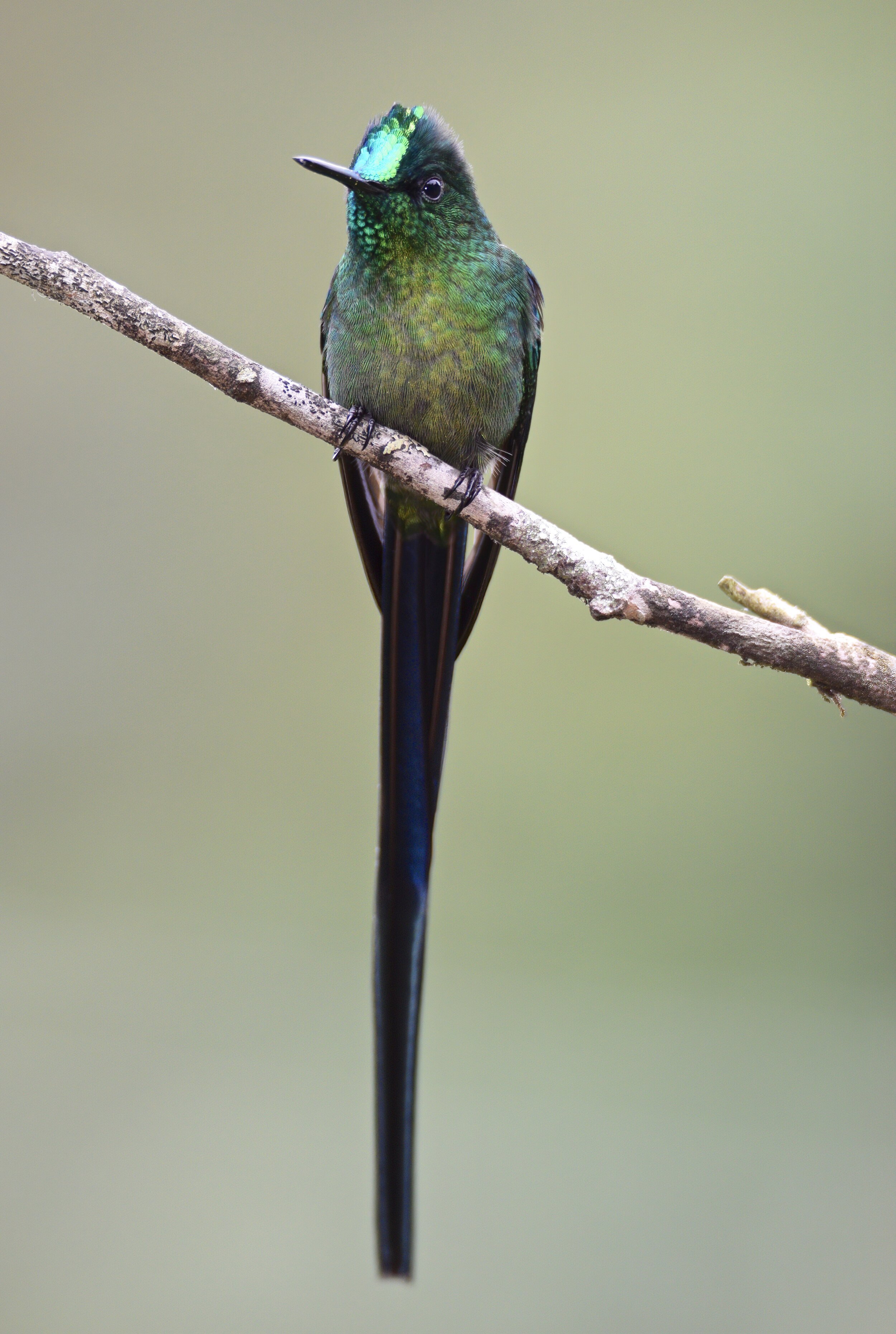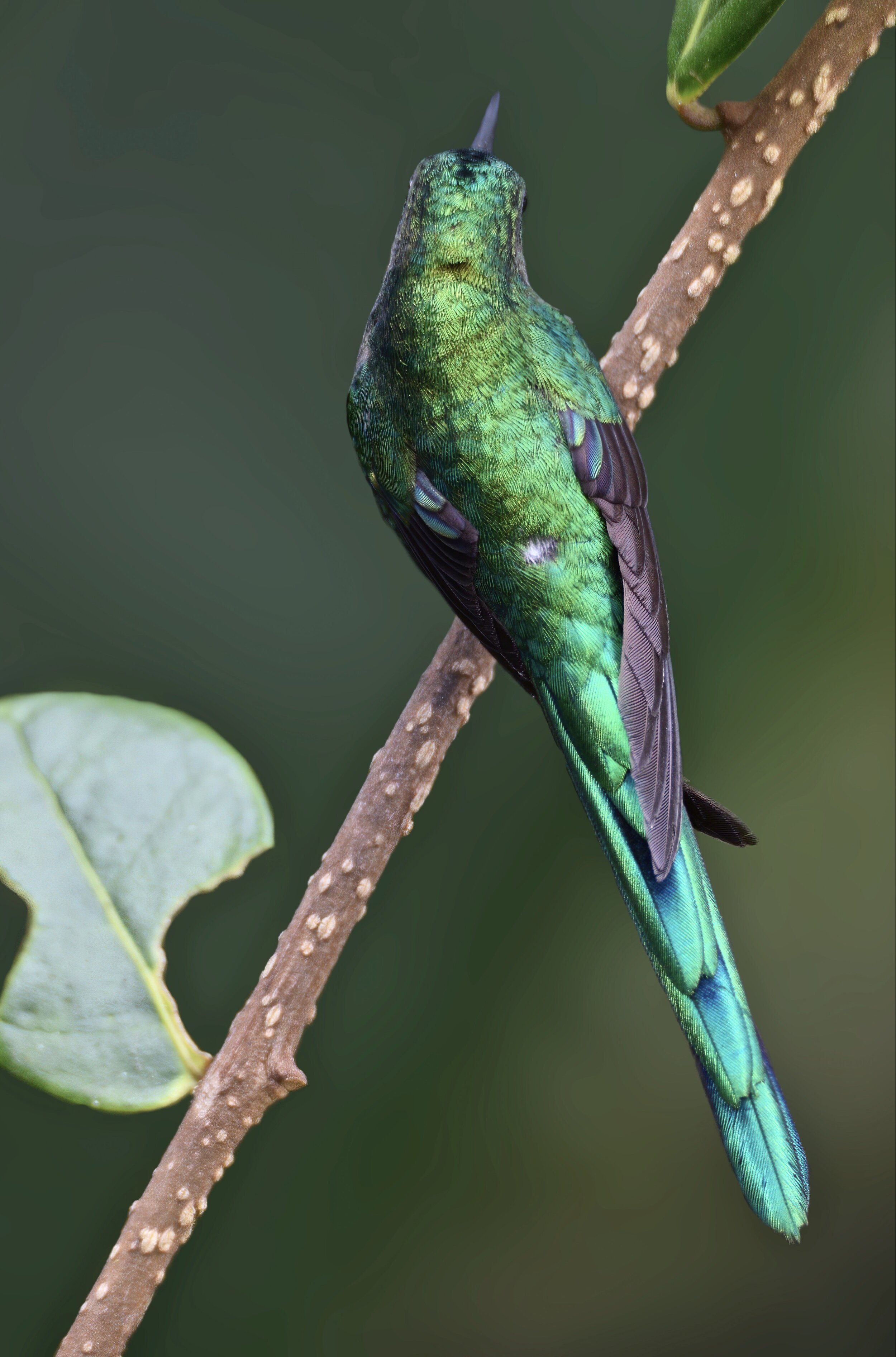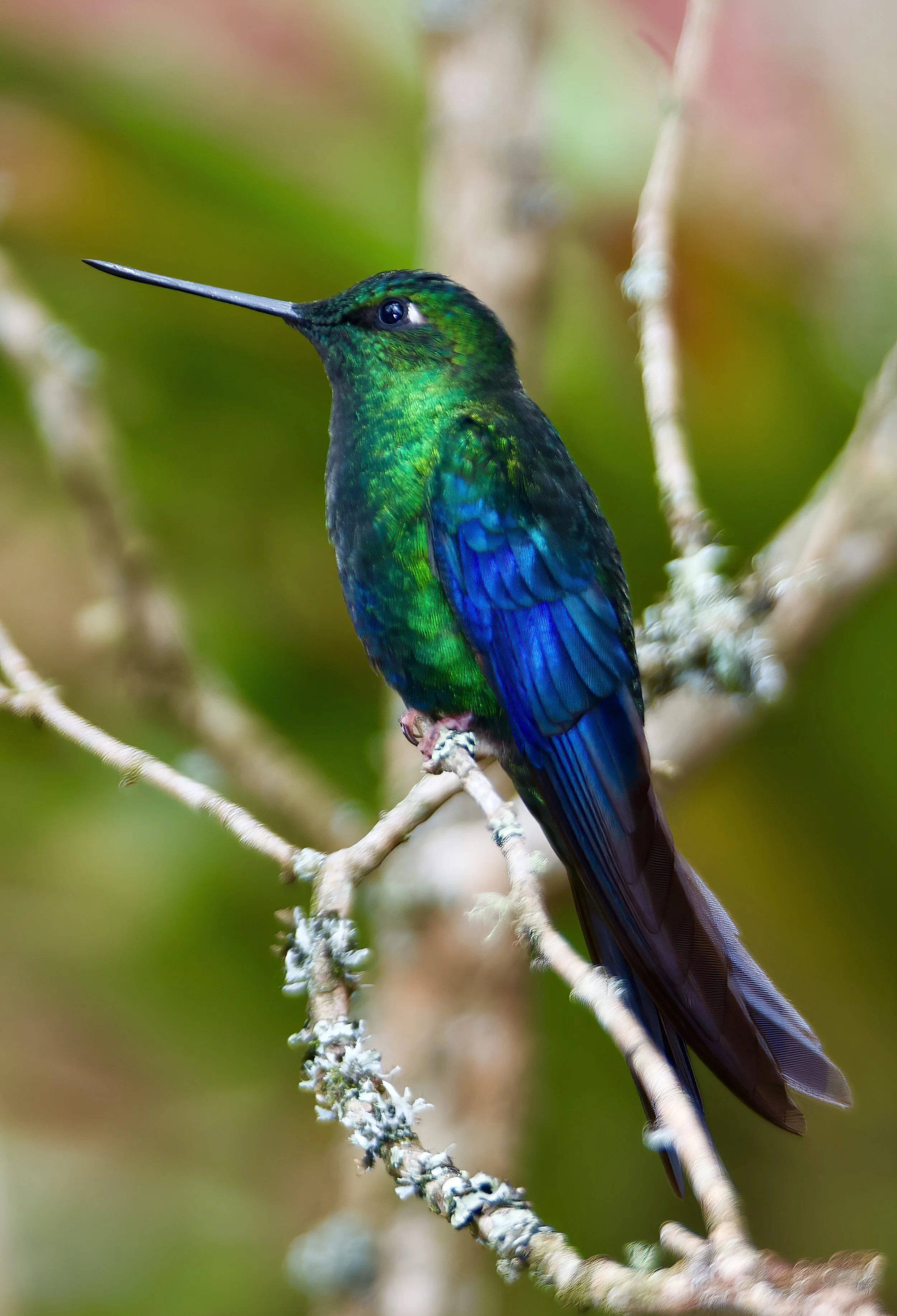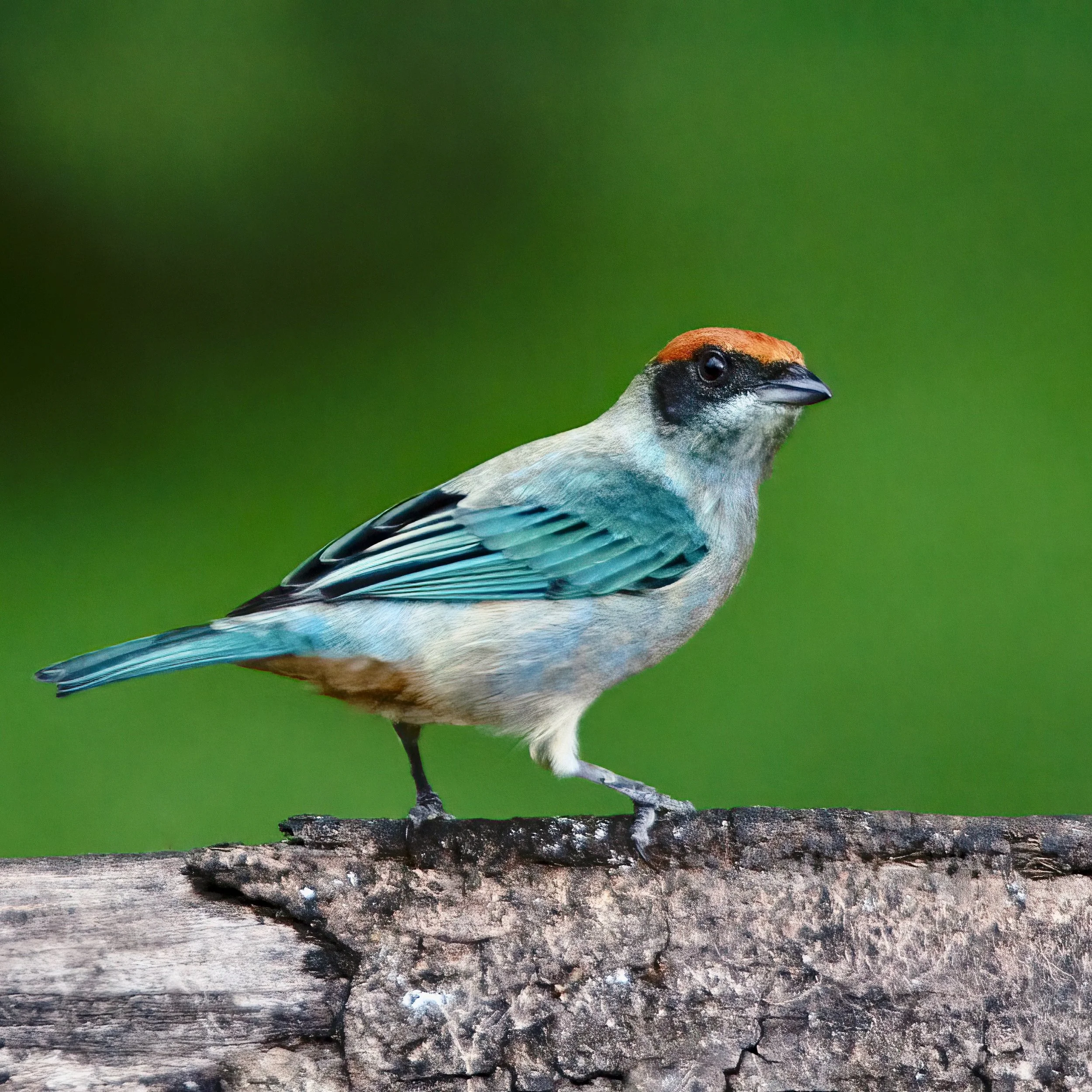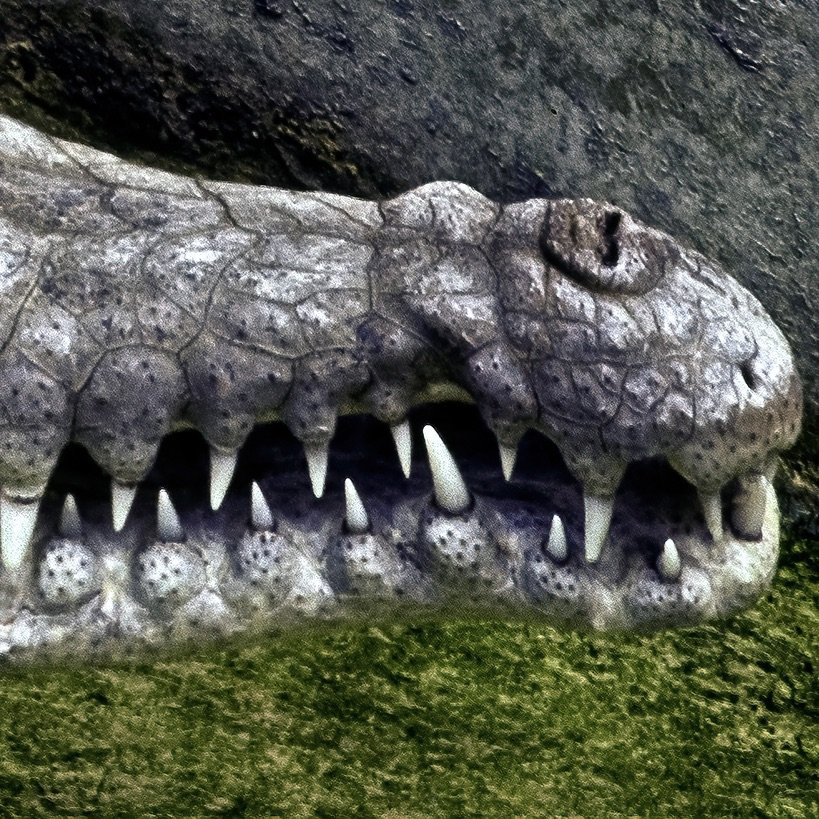Hummer Portraits
Beauties in the eye of the beholder
by Peter Rockstroh
Male black-tailed trainbearer (Lesbia victoriae) sparkling in morning sunshine. Image: P. Rockstroh.
In Bogotá I’ve learned to enjoy sunshine dosed by the hour. The “Rolos”, as Bogotá-born people call themselves, take this to the extreme of dressing specifically for these fleeting sunlit interludes. It is quite common to see people here on the streets of the city wearing light summer clothes on a cold and dreary afternoon attributable to a couple of hours of sunshine they took advantage of and dressed for in the morning.
Over the past months I’ve taken a new series of native hummingbird portraits during these morning sunshine windows that we see between December and March. Hummers, being sun worshippers like most true Rolos, are most active at this time. Although I continue striving to perfect my technique for freezing images of these fantastic and speedy birds in flight, I’ve come to notice that when the light and temperature conditions are right, and there is no wind, these tiny jewels display their full glory by posing at perfect angles towards the sun. These very intense flashes of color make the best impression on both competing males and possible mates as well as leaving me an even bigger admirer of their elfin panache.
While my normal protocol for capturing images in flight has me trying to position myself in places facing a dark background in order to avoid the problem of ghosting (see “Hacks for HIF” elsewhere on this site), for the portraits shown here I followed a different set of rules. Keeping the sun at my back, I looked for perches these birds will be tempted use to claim temporary territories for nuptial displays or to defend food resources.
Front and dorsal images of a male long-tailed sylph (Aglaiocercus kingii). Images: P. Rockstroh.
Upon arrival at these perches, the males will sit there, mostly for a few seconds, sometimes up to minutes, calling and chirping at conspecifics. Once this phase of their display is complete, they will then engage in aerial maneuvers trying to dominate the airspace, returning to the perch seconds later if they won. Otherwise, another Top Gun claims the site.
While for flash photos of birds in flight I work with low ISO/ASA settings (i.e. 100 – 400), for portraits I favor higher sensitivity, usually ISO/ASA 800 – 1200. The main reason for that is that a large percentage of these photos is taken handheld, requiring both high shutter speeds and a mid-range f/stop. Typical settings for these photos are 1/1,000 sec. @ f/8.
Male Tyrian metaltail (Metallura tyrianthina). Image: P. Rockstroh.
After investing some time watching an individual bird’s activity, it soon becomes clear where the seats of power lie, and who wants to impress whom. These spots can then be covered by the lens with your camera locked on a tripod, looking for birds moving a tad slower with a smaller aperture for a slightly wider depth of field.
Above left, male blue-fronted starfrontlet (Coeligene helianthea) and above right, male green sapphirewing (Pterophanes cyanopterus). Images: P. Rockstroh.
Male brown violetear (Colibri delphinae) looking a bit like it’s just had a hipster rainbow sideburn and beard dye. Image P. Rockstroh.
To begin a session, I start by photographing my subjects from the same position. As conditions change, I fine-tune the exposure manually, but I always start in Shutter Priority Mode (S). So, I set my ISO/ASA to 800 - 1,000, and my shutter speed to between 1/640 to 1/1000 sec., then set the selector to S. That allows me to focus and compose, knowing that this fast shutter speed will stop motion and yield a depth of field that will keep most of the bird in focus. Should they move to another spot, I can still follow across a range of changing light conditions without missing the right exposure or producing blurred images. Taking this type of photo in full automatic mode will usually result in slightly blurred images, as the exposure mechanism tries to balance aperture and shutter, and often comes short in the latter. Using a full automatic setting with flash is also not recommendable, since most cameras have 1/200 sec – 1/250 sec as maximum flash sync speed. If you are using a large lens, you’ll notice immediately that those settings are not enough for what you need. A handheld 500 mm lens will have enough movement to show as soft focus, even at shutter speeds of 1/500 sec.
Coming from a background of 25 years of black & white medium and large format film photography, my idea of “editing” is throwing out substandard negatives. The concept of correcting a defective negative is something alien to this format. A mediocre negative will, at best, yield a mediocre print. On the other hand, my computer skills are probably subpar compared to the current crop of tech savvy youngsters, so I work with tools that are as user-friendly as possible. I still rough edit by throwing out most images. Basic cropping and cleaning is done with Photoshop, although I am starting to use Lightroom. I have recently tried Topaz Sharpen AI and Topaz Mask AI and find these plug-ins are effective and easy to use. They are a great solution to remove background clutter, especially when I’m photographing subjects like orchids and I want to make them stand out.
What I do is…coming out in the next article. Keep safe and stay tuned
PR
Male purple-throated woodstar (Calliphlox mitchellii), with its head dusted with pollen. Image: P. Rockstroh.
Male white-booted racquet-tail (Ochreatus underwoodii). Image: P. Rockstroh.
That’s all folks! White-bellied woodstar (Chaetocercus mulsant) trolling for a closeup selfie. Image: P. Rockstroh.
All content ©Exotica Esoterica LLC® 2020-2025 and ©Peter Rockstroh 2020
Follow us on:
